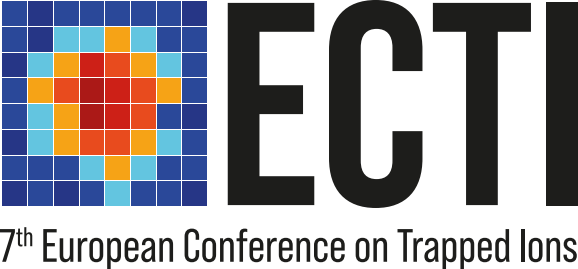Speaker
Description
We theoretically examine the effects of spontaneous emission at high magnetic fields for multi-qubit entangling operations on large ion crystals, and compare different gate types, laser beam detunings and polarizations, magnetic field strengths, and ion species. We show that the current configuration in the Penning trap at NIST is approximately ideal for light-shift (LS) gates in $^9$Be$^+$ ions. The Molmer-Sorensen (MS) gate is of interest as well since it may have superior phase stability and allow simulations and sensing using three-dimensional crystals with up to $\sim$$10^5$ ions. We demonstrate that the MS gate for $^9$Be$^+$ has similar predicted error rates due to spontaneous emission with our current magnetic field strength, and that both gates can be improved by detuning farther from resonance and using higher laser intensities. Furthermore, for both gates, we compare error rates at lower magnetic field strengths with those for our current field of 4.5 T and examine the dependence of the error rates on the fine structure splitting. These calculations show that for fixed detunings, the errors in the LS gate with our current laser beam geometry worsen significantly for both lower magnetic fields and heavier ions. Conversely, the error rate for the MS gate for a given detuning shows approximately no dependence on the magnetic field, and increases more slowly with fine structure splitting than that for the LS gate.
Another approach to improving errors due to spontaneous emission is the use of parametric amplification (PA) to amplify the strength of the spin-dependent optical dipole force that couples the spin and motional states of the ion [1]. We implement PA with a RF drive nearly resonant with twice the axial center-of-mass mode frequency of a two-dimensional crystal in a Penning ion trap and characterize the strength of the PA through the generation of motional squeezing. We theoretically discuss the potential improvements in employing PA for sensing small displacements and generating spin-squeezed states in the presence of realistic motional dephasing.
[1] W. Ge, et al., PRL 122, 03051 (2019).
*Supported by DOE, Office of Science, NQIS Research Center QSA, AFOSR grant FA9550-20-1-0019, and DARPA ONISQ.

